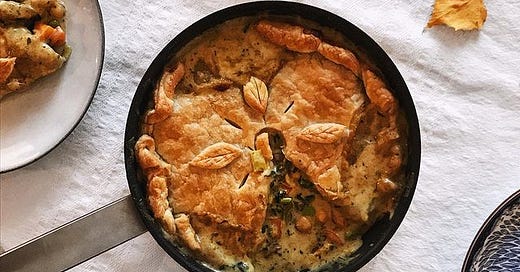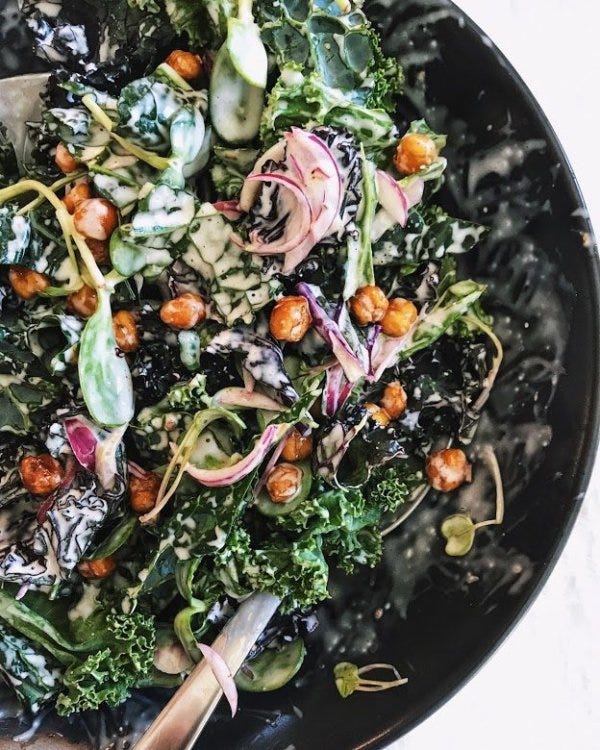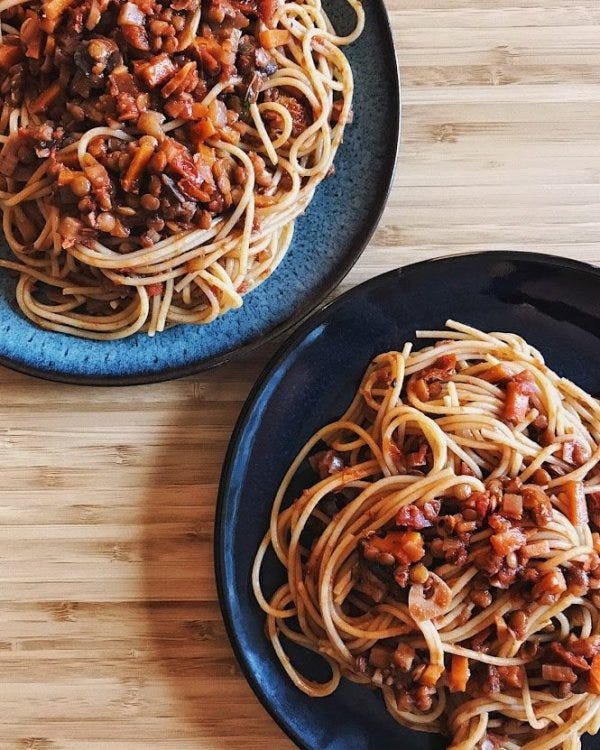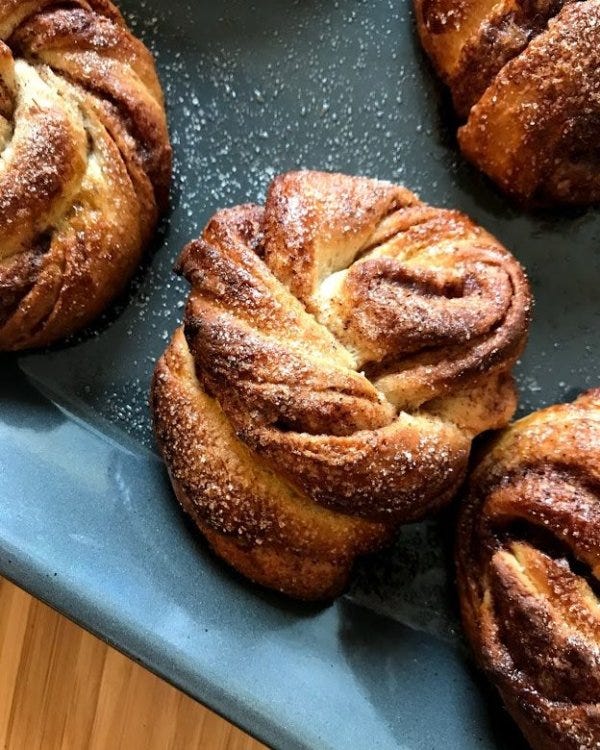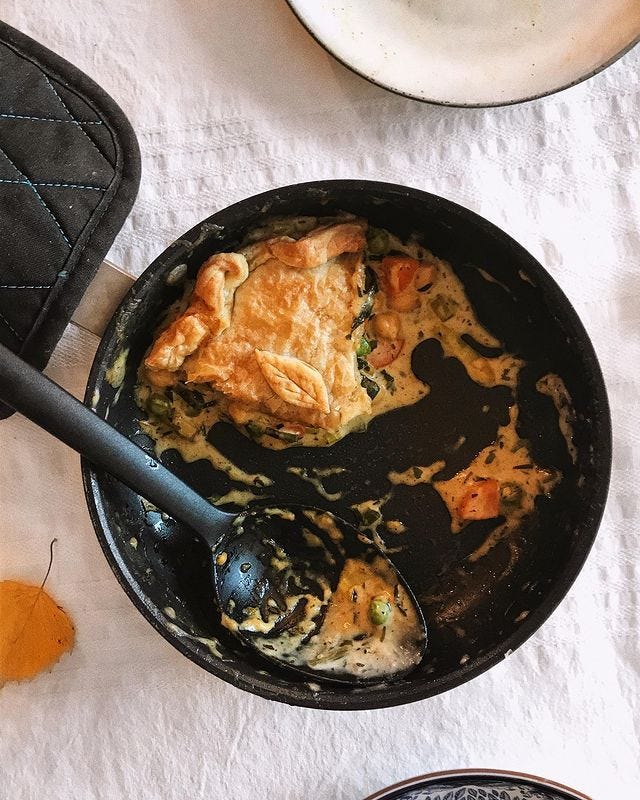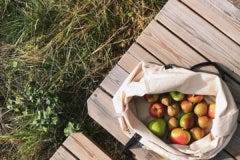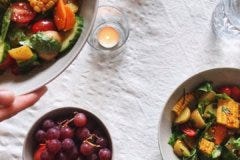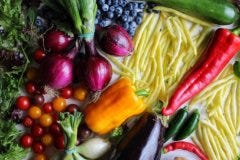Allô! 👋
It's nearly the end of 2020 (hurray, we made it!) and I hope this letter greets you just as you are enjoying – or about to enjoy – some well-earned time off.
At this point it's perhaps been said too many times already, but I just can't help saying it again: this year has been weird. And somewhat inevitably, things have continued being weird right up into the holiday season.
Personally, I made the difficult decision to stay in Norway for Christmas. Although I was reluctant to spend my favourite holiday away from my favourite people (whom I have not been able to see for longer than I care to admit), it ended up being what's best for me and my family and literally anyone else we may have encountered along the way.
Looking on the bright side, the next time we all see each other we won't have to worry about the risk of infecting one another or anyone else – and in the meantime, I get to have two Christmases: one on the 24th, Norwegian-style, and a virtual one on the 25th.
Now, if you ask Canadians what they typically eat over the winter holidays or on Christmas Day, you'd probably get a bunch of different answers. Although we all have our own personal traditions or family favourites, there really is no standard fare that is guaranteed to be enjoyed by nearly every Canadian for the same holiday meal (the same cannot be said for Norwegians and I, for one, *know* that I will be among millions of nordmenn eating cinnamony rice porridge for lunch on Christmas Eve).
That being said, if you're looking for some food ideas to help make this year's holiday season more bearable, or even as jolly as can be, I do have some suggestions for you.
Below are a few new recipes off the site and, as a special gift for you, a newsletter-exclusive recipe for a chickpea pot pie that has become an instant classic in my home. Whether you choose to prepare the dishes I've shared or are looking forward to eating other foods entirely, I hope every meal this season can bring you some moments of joy as we all continue to navigate this odd period in our lives.
Wishing you good health (and a better year ahead),
👋simone
from the site
a cripsy chickpea caesar
Here's an easy peasy (get it?) recipe for the crispiest, tastiest chickpeas you've ever had, plus a template for making delicious creamy and crunchy salads – be they in the style of the classic Caesar salad or not.
slow-cooked lentil bolognese
There’s nothing quite so comforting as a dish that is both hearty and nostalgic. And whether you replace all or just some of the meat with lentils, this sauce is guaranteed to give you all the warm fuzzy feelings.
kanelknuter (cinnamon knots)
You better watch out, cinnamon bun. 'cause cinnamon knots are coming to town. And lucky for us all, making them is the perfect activity for those Christmas-has-passed-but-it's-not-New-Year's-yet days where you're not quite sure what to do with yourself (but eat and relax).
🥧 a cheerful chickpea pot pie recipe 🥧
makes enough for 2 very hungry people, or 4 servings
I've cooked this pot pie a few times now, and it always goes down a treat. Each bite is pure comfort and joy. To make it, I use a small oven-proof frying pan that is 23cm (9 inches) in diameter and 5cm (2 inches) deep. It's what I have on hand and does the trick, but you can of course use whatever pan you like for the stovetop portion of the cooking, and an equivalently-sized baking dish for the oven part. If you've got the time, energy and desire to make the pie crust yourself, please do: it's quite rewarding and tastes incredible. If not, go forth and proudly use store-bought puff pastry! Both methods will yield great results.
THE CRUST
If using store-bought puff pastry, transfer it from your freezer to your refrigerator to thaw before starting on the filling. Otherwise, proceed to make a rough puff pastry:
• 75g cold butter, cut into large cubes or chunks
• 75g flour, plus more for dusting
• 15g ice-cold water
• 1 tsp fine salt, or 1/2 tsp if your butter is lightly salted
• 1 tsp dried tarragon (= 1 Tbsp fresh taragon, finely chopped)
• 1 tsp freshly ground black pepper
1. Combine butter, flour and seasoning in a bowl, rubbing the butter into the flour until the mixture has roughly come together and looks a bit shaggy and crumbly – do this thoroughly but briefly, so as to not warm the butter too much with your hands.
2. Add in the ice water bit by bit, doing your best not to overmix, and using only enough water to form a loose ball that is evenly moist. You'll know you're there when you squeeze a piece and the dough clumps together.
3. Lightly flour a clean surface and transfer your dough onto it. Use a rolling pin or a glass bottle to roll out a long rectangle – long enough to fold the dough into three, lengthwise. Bringing the dough from top to centre, then bottom to centre, make a three-layered parcel.
4. Rotate the rectangle 90 degrees and repeat rolling and folding until the shaggy mound of dough you started with has turned into a cohesive, homogenous dough, speckled with marbled layers of still-cold butter. You may need to briefly pop the dough into the freezer during the process to ensure it stays cold.
5. Once done, pop the dough into the fridge until ready to use.
THE FILLING
• butter
• 1 small carrot or 1/2 a large one, diced into quarters
• 1 small potato, diced into small pieces
• the middle of a leek, about as long as your hand, with both green and white parts (slice in half lengthwise to clean well, then chop across its width)
• half as much celery as you've got carrot, cut the same way, plus a handful of celery leaves
• 1 tsp dried or 1 Tbsp chopped fresh tarragon
• 1 tsp dried or 1 Tbsp chopped fresh rosemary
• 1 tsp dried or 1 Tbsp chopped fresh thyme
• white wine (optional)
• flour
• 1 cup vegetable broth
• 1/2 cup cream
• Dijon mustard (optional)
• 1 bay leaf
• 1 cup cooked chickpeas (see below)*
• 1/2 cup frozen green peas
• salt
• pepper
If using dried chickpeas, cook a batch in some vegetable stock, popping in some peppercorns and a bay leaf into the pot. You can do this is up to 3 days ahead. Or just use cooked chickpeas from the shop :)
*note: you can save the chickpea cooking liquid (i.e. aquafaba) to use as a substitute for egg wash when assembling the pie; it'll help give your crust a nice golden shine
1. Melt a tablespoon of butter on medium-high heat in your frying pan (make sure it's oven-safe if you plan to use it as your baking dish).
2. Add the carrot, potato, leek and celery to the pan along with the tarragon, rosemary and thyme, plus some salt and pepper. Add a splash of white wine if you like. Cook, stirring occasionally, until the vegetables have softened a bit and (if using) the wine has evaporated – then transfer to a bowl and return the empty pan to the heat.
3. Add 1.5 Tbsp of butter to the pan. Let it melt. Whish in 2 Tbsp of flour until the mixture bubbles and the flour smells cooked (you are making a roux!). Now is also a good time to preheat your oven to 200°C/400°F.
4. Whisk the vegetable broth in with the roux, let it thicken a bit, then whisk in the cream. Add in 0 to 3 teaspoons of Dijon mustard – none if you don't like it, more if you do – and a bay leaf, plus a few turns of the pepper mill. Let cook a bit longer, just until thickened, then remove from the heat.
5. If using the pan in the oven, pour the vegetables, chickpeas and frozen peas straight into and and combine so as to even cover everything with the sauce. If using a separate baking dish, transfer the sauce to it and likewise combine it with the other ingredients. Taste and adjust seasoning if necessary, then leave the filling to cool while you roll out the dough.
THE ASSEMBLY
1. Lightly flour a clean work surface, then remove your dough from the fridge. Roll it out from the centre outwards, flouring lightly as needed, until it is large enough to cover your baking dish/pan + some overlap. Try to move quickly, as you want the dough as cold as can be prior to baking – cold dough means cold butter means deliciously flaky pastry.
2. Remove the bay leaf from the filling. Transfer the rolled-out dough to the pan/dish (with the help of the rolling pin if necessary: roll the dough on the rolling pin, then unroll over the baking dish). You can use a beaten egg to help seal the edges of the dough to the pan/dish, but it's not absolutely necessary. Just do your best to make a tight pastry lid, so as to avoid any of the filling spilling out from the sides.
3. Poke vent holes into the top of your pastry, using a knife, like so:
4. Optional: Lightly brush the pastry with egg wash (1 egg beaten with a very small splash of water) or with leftover chickpea liquid. This step is all about appearances, so won't really affect taste or texture if you skip it.
5. Bake for 20 minutes. Reduce the oven temperature to 190°C/375°F and bake 10 to 20 minutes more, until the crust is evenly golden and the filling is bubbling out through the vents. Let rest 5-10 minutes before serving.
All that's left to do now is enjoy.
Bon appétit! ♥
more from the site
As my love for cooking simply cannot be separated from my passion for public health, you'll also find short little essays like these on the website.
on why surroundings matter
You may have already read my thoughts on the joys of eating vegetables and on what (and how) I eat. But what good is loving vegetables and wanting to eat…
on what (and how) I eat
While I don’t believe in anguishing over the purported health benefits of individual foods, I do think there is great value in striving to achieve a generally healthy pattern of eating*.…
on the joys of eating vegetables
In 2017, less than one third of Canadians living in food secure households reported consuming fruit and vegetables five or more times per day*. Had we grown up eating freshly…
This was a Substack edit of an archived newsletter. To read the newsletter in its original format, click here.


